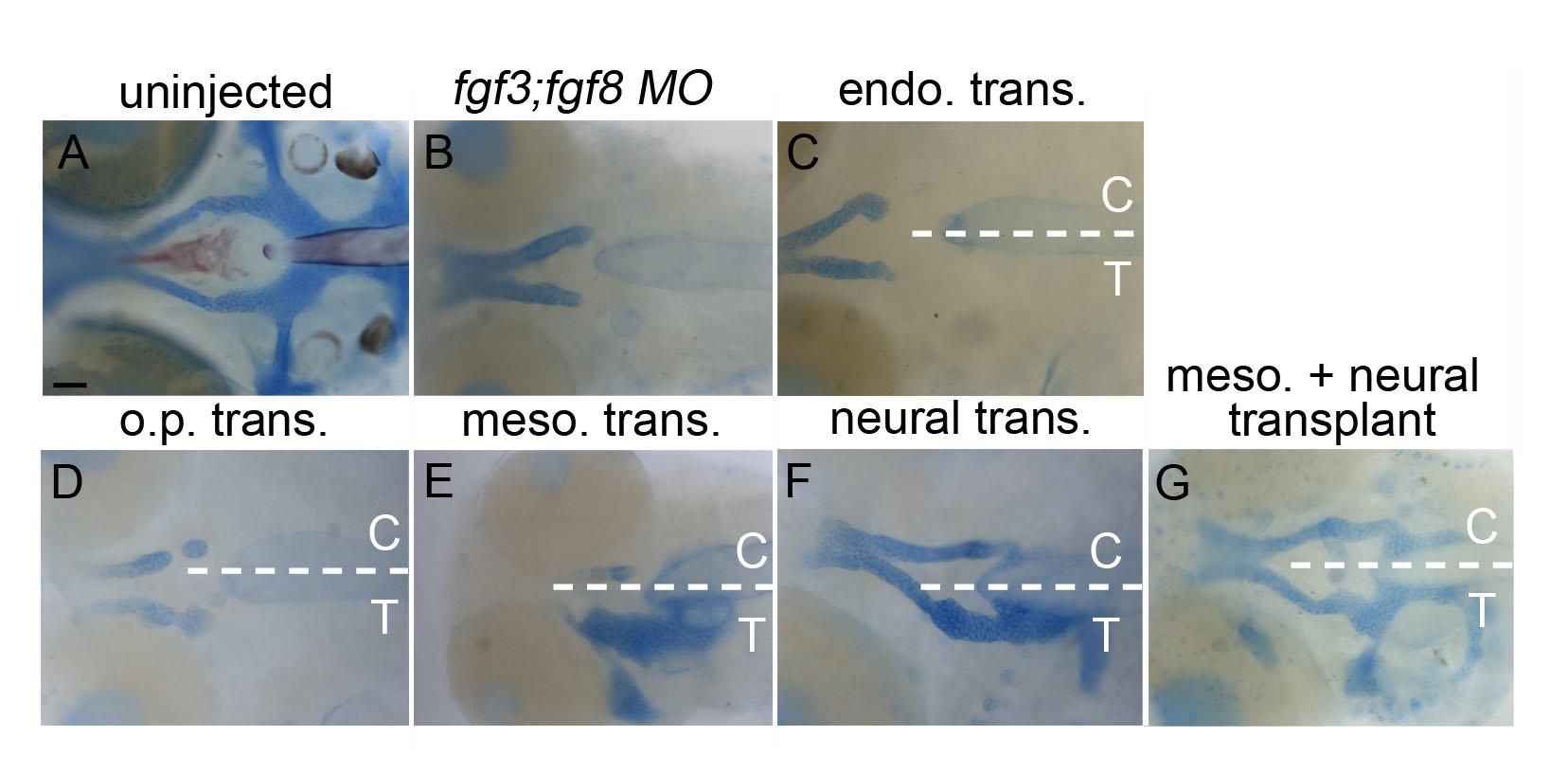Fig. S2
Additional examples of transplants showing the mesoderm and neural ectoderm as Fgf sources required for postchordal neurocranial formation. (A-G) 4 days post fertilization (dpf) neurocranial wholemounts with viscerocrania removed. Anterior is to the left. Transplanted side of neurocrania is marked with a T, and control side with a C. (A and B) 4 dpf postchordal neurocrania of uninjected and fgf3;fgf8 morpholino injected embryos respectively. (C and D) Neither endoderm nor otic placode transplants, respectively, rescue postchordal neurocranial defects, however, (E and F) mesoderm or neural ectoderm transplants, respectively, can partially rescue postchordal neurocranial defects. (G) A dual mesoderm and neural ectoderm transplant can fully rescue the postchordal neurocranial defects found in fgf3;fgf8 morpholino-injected embryos. scale bar=20 µm.
Reprinted from Developmental Biology, 415(2), McCarthy, N., Sidik, A., Bertrand, J.Y., Eberhart, J.K., An Fgf-Shh signaling hierarchy regulates early specification of the zebrafish skull, 261-77, Copyright (2016) with permission from Elsevier. Full text @ Dev. Biol.

